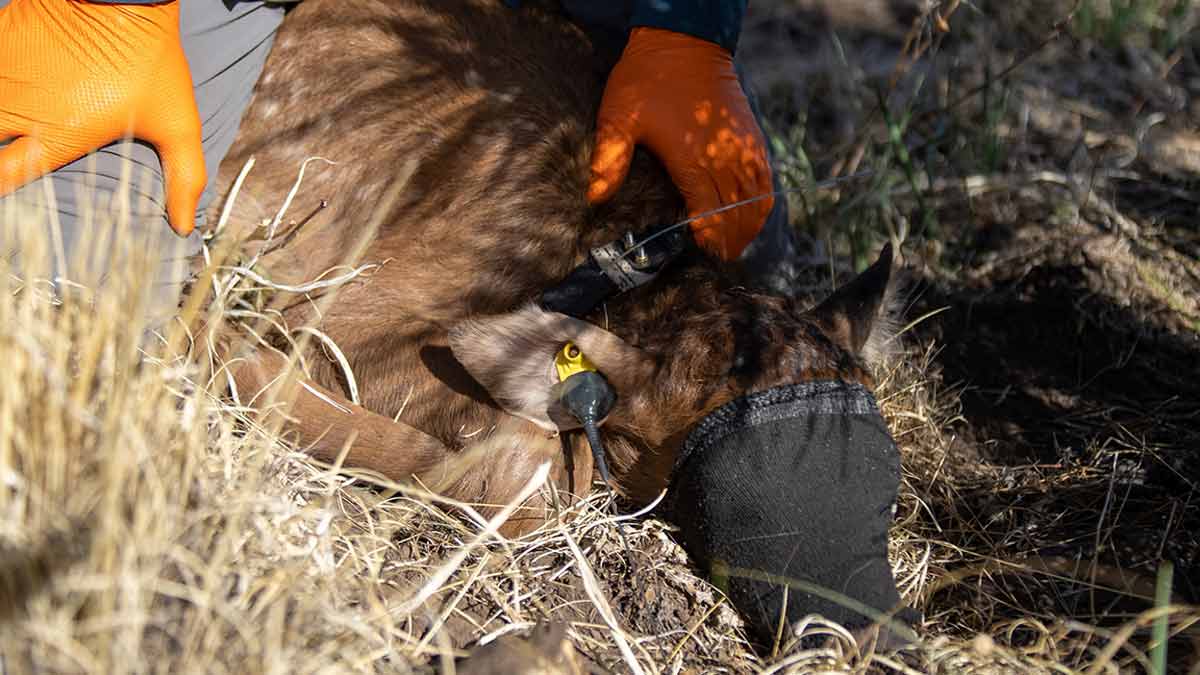The New Mexico Department of Game and Fish recently distributed a series of Facebook posts with multiple photos about a recent elk calf capture project.
It is part of the multiple-question research conducted at New Mexico State University Cooperative Fish and Wildlife Research Unit under Dr. James Cain. The project began in the fall of 2018, and several questions are being investigated, all of which are related to the potential impact of the recovering Mexican Wolf population in the Gila National Forest and adjoining Apache-Sitgreaves National Forest in Arizona. Graduate students seek to determine several impact components, including changes in elk behavior, habitat use and survival across a high-low gradient of wolf density.
Starting in spring 2019, crews captured both adult cow and juvenile elk annually and fitted them with GPS collars to gather spatial and survival data pertaining to both. They collared close to 900 cow elk and nearly 800 calves across the entire study area. The calf count per year includes:
- 2019 – 231 calves
- 2020 – 188 calves
- 2021 – 168 calves
- 2022 – 194 calves
Game and Fish is partnering with the NMSU COOP to learn how these impacts may influence population performance and could aid in adjusting hunting licenses where necessary to adjust for additional mortality due to predation. Elk, mountain lion and Mexican wolf GPS data are being utilized for this project to understand the predator/prey dynamics and survival estimates.
Partners for the project include the New Mexico Department of Game and Fish, Arizona Game and Fish Department, RMEF and New Mexico State University.
(Photo credit: Rocky Mountain Elk Foundation)
